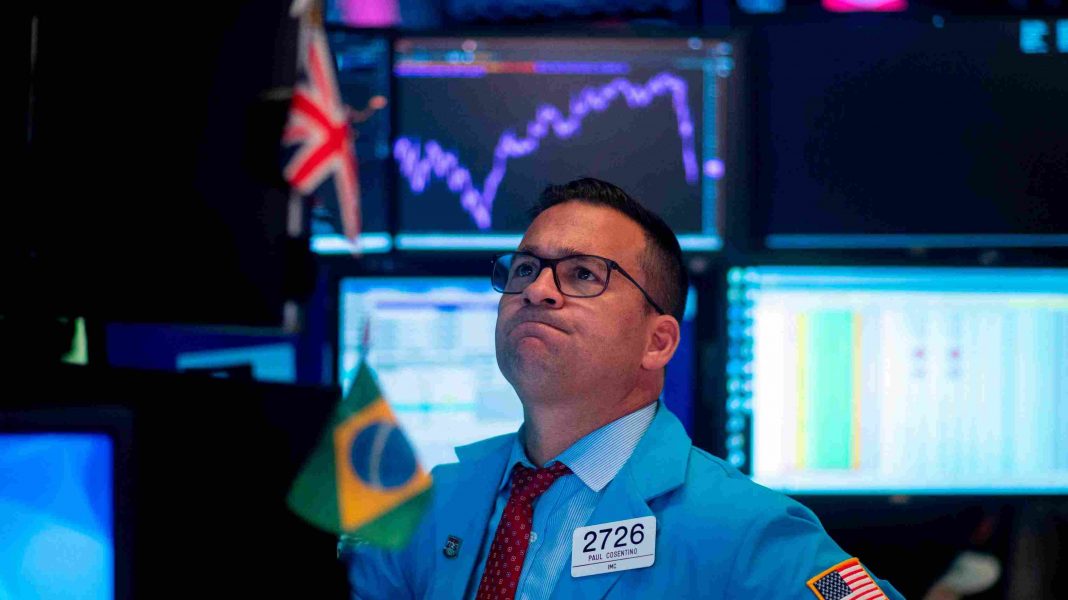New statistics from China drove Wall Street’s steady drop into its sixth week on Monday, adding to fears about a global economy that is being hammered by high inflation, increasing interest rates, and a failing supply chain, among other factors.
This latest loss brings the S&P 500 index’s year-to-date decline to 16.3 percent, including a five-week losing streak that is the market’s longest such streak in more than a decade, to a halt.
Because of the decrease, equities are on their way to entering a bear market, which is defined as a decline of 20 percent or more from recent highs, a retreat that signals a significant change in mood on Wall Street.
It was the Chinese economy that was the centre of attention on Monday, as customs statistics revealed that the country’s export growth had slowed sharply in April, and Li Keqiang, the country’s premier, warning this weekend that the country’s employment market was in a “complex and severe” position.
There is a lengthy number of reasons for investors to stay away from equities at the moment. Consumption in the United States will be hampered by increasing prices and interest rates, while the conflict in Ukraine and the lockdowns in China are sapping supply of everything from food to oil, worsening the country’s inflation crisis.
With the Federal Reserve’s efforts to slow the economy, a crutch for investors over the previous two years, low borrowing rates and easy access to cash, which helped drive a dizzying rise in equities, is beginning to wear out as well.
As recently as Monday, Raphael Bostic, the president of the Federal Reserve Bank of Atlanta, said in an interview that if the economy does not react positively to the Fed’s interest rate rises, the central bank may be forced to step up its efforts to chill growth. Increasing interest rates by three quarters of a percentage point in a single step is one option, but he does not believe it is essential at this time.
Annual inflation hit 8.5 percent in March, the highest rate in more than 40 years, with gasoline and food costs pushing prices higher. Economists anticipate that price increases will have moderated somewhat when the Consumer Price Index for April is revealed later this week. Analysts believe that one month of improved data will not be enough to bring markets back to normal, but it may be a start.
With the S&P 500 gaining 26.9 percent in 2021, there appeared to be no bad news that could derail the market, with the index experiencing daily gains or losses of more than 2.5 percent only once, on Jan. 27, as meme stocks like GameStop and AMC Entertainment spiked in a speculative frenzy and the Federal Reserve warned that a resurgent coronavirus was weighing on the economy.
That began to shift when the Federal Reserve stopped referring to inflation as “transitory,” or something that may subside when pandemic lockdowns eased, and instead took a more proactive stance toward bringing down rapidly rising prices. Since the beginning of the year, there have been eight trading days with gains or losses of at least 2.5 percent — or almost one out of every nine trading days. All of the significant daily changes occurred in the months of March, April, and May.
Recessions and the periods that follow them are more likely to be characterised by long periods of large gains and losses. Before the pandemic wrecked havoc on the stock market in 2020, the most recent period of significant upheaval occurred between 2007 and 2011, during the financial crisis and the subsequent recovery. Prior to then, the dot-com bubble and crash, as well as the September 11th attacks, created a period of volatility.
Bear markets are also very rare, with the most recent two occurring in early 2020 and the financial crisis that preceded it, respectively. The 20 percent trigger for a bear market, as well as the 10 percent trigger for what investors refer to as a “correction,” are rather arbitrary levels, but they serve as signals indicating investors have become markedly more pessimistic about the state of the globe.
A slew of factors are contributing to that pessimism right now, and they will “push the S&P 500 into a bear market,” according to Victoria Greene, chief investment officer of G Squared Private Wealth, an advice business.
In her words, “we still have some structural challenges, such as a hawkish Fed, the Ukraine, commodity price pressure, Covid shutdowns in China, and inflation,” which are putting downward pressure on growth forecasts.

